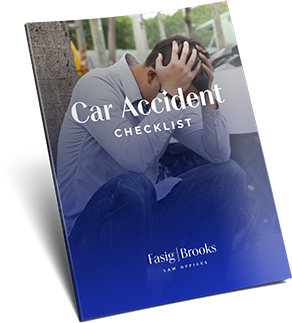
Guardrails
Highway and roadway guardrails are put in place to save lives. In the event of an accident, they are to prevent vehicle from going down steep embankments or traveling into oncoming traffic. However, if guardrails are improperly manufactured or installed, motorists who are to be protected by these guardrails can instead be seriously injured or killed.
As explained by one expert, the design of a guardrail varies depending on how and where it is to be used. In general, however, guardrails are long strips of cast metal which are attached to posts. The metal is bent so that it has multiple ridges, usually forming a W pattern. When a vehicle hits the guardrail, the ridges are designed to crumple and absorb the crash impact as the vehicle travels along the length of the guardrail. The guardrail posts are positioned to prevent the rail from collapsing, unless the vehicle hits the rail at a very high speed or the vehicle itself is very heavy.
Guardrail Failures Blamed On Manufacturer
Guardrails that are to be used on federal highways must be constructed according to federal safety standards. However, last year, a jury found that Trinity Industries, a major manufacturer of highway guardrail systems, was found to have defrauded the federal government by secretly making changes to its guardrails. These design changes allegedly caused the guardrails to malfunction and have reportedly resulted in at least 14 lawsuits, which blame the modified guardrails for five deaths and at least 10 injuries in several states, including Florida, Texas, Virginia, and Tennessee.
As explained by one source, starting in 2005, Trinity Industries made changes to its ET-Plus rail head which changed how the guardrail collapsed in the case of an accident. When properly designed, the rail head or end terminal (which is often marked with yellow and black stripes) is supposed to slide along the guardrail when a car hits it head on. This sliding motion pushes the rail itself to the side of the vehicle. However, under Trinity’s design change, the rail head allegedly jammed, rather than sliding along the rail, causing the rail to pierce the vehicle like a “harpoon.”
This harpooning effect has occurred in several accidents. One reported accident involved a young man who was driving along a highway when his SUV veered sharply and slammed head-on into a guardrail. As the vehicle hit the rail head, the rail head jammed, causing the long steel guardrail to cut through the vehicle’s floorboards and impaling the driver’s legs. The driver suffered significant trauma and blood loss, which ultimately resulted in both of his legs being amputated below the knee.
These guardrail failures have resulted in four states (Missouri, Massachusetts, Virginia, and Nevada) banning further purchases of the Trinity ET-Plus head rails.
Tallahassee Legal Help For Auto Accidents Involving Guardrail Crashes
While most drivers and passengers do not think much about guardrails, these roadway safety features are supposed to save lives by preventing people from falling off embankments and by absorbing the impact of accidents. If you or someone you love has been injured in an automobile accident involving a malfunctioning guardrail, the experienced Tallahassee automobile accident attorneys at Fasig & Brooks are available to listen to your situation and advise you regarding your rights to financially recover for your losses.
Call us at (850) 222-3232 or use our online contact form today.





